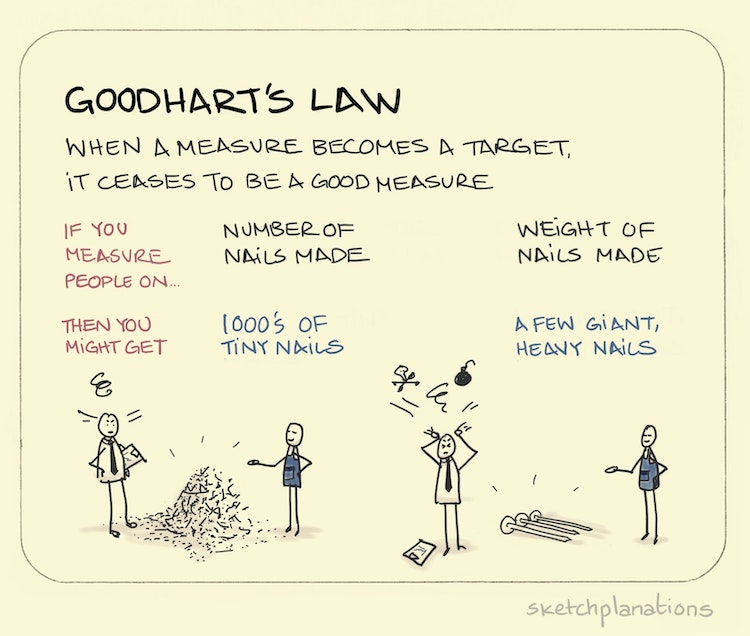Numbers can be useful when we are trying to measure the performance of something. Can you imagine watching a football match without scores? But in many situations the numbers alone aren’t enough to tell us everything we need to know about how well things are going.
Drop off
The other day, a parcel was delivered to our house. I opened the door and as the courier delivered the parcel he put it inside the threshold, photographed it and said “I need to get your feet in the picture”
We have all grown reliant on our local couriers as we meet our consumer needs, even more so in the last year. I’ve got to know this chap quite well.
But somehow his request felt a little too familiar.
On seeing my perplexed look he quickly reassured me that this wasn’t some strange parcel-and-foot fetish. It was the evidence his managers needed so they could audit that deliveries had been received securely.
Target Met
Success for courier companies is delivering safely and on time. This courier company want to ensure deliveries make it to their recipient.
The picture the driver takes with the open door and visible feet is their proof of a secure delivery.
And they audit their drivers. A target of 90% plus must be met in order to pass the audit. Fail three times and the driver is out.
For those whose parcels have gone astray I can sense you nodding in agreement to this approach.
But does it really achieve what it sets out to do? Does the measure reflect the outcome?
Satisfaction guaranteed?
I’ve got to know our local courier quite well.
He’s reliable and likeable.
He knows where our safe place is if we are out and knows enough of our neighbours to decide which ones can take a parcel if needed.
And for me it’s these qualitative factors that make the difference between his company and some of the rivals who lack that personalised approach. In fact there are retailers I will now avoid because they use couriers who aren’t so attentive to this quality.
But I’m not alone in valuing this attention to detail. Another of our courier’s customers is a nurse who has a regular Friday morning conference call. She’s at home but can’t come to the door. He knows where to leave the parcel.
And what about the older, vulnerable customers who wave to him from the window and point to the porch or door. No door is opened, no feet appear yet the parcel is still delivered and is safe snd sound inside moments later.
None of this is captured by that quantitative score or even the “qualitative” photo evidence. Would it pass the audit? Probably not but the customers probably feel their needs have been more than adequately met with a smile and a wave to boot.
And of course there are individual drivers who, so it is said, line up empty shoes in a porch, take the picture and leave.The target might be met but the outcome is not what was intended - which is a very good illustration of Goodhart’s Law1.

Collecting numbers is only useful if you can see the wider context in which those numbers come about. Quantitative data and qualitative evidence are the ying and yang of research, you should never have one without the other.
So whether it’s understanding trends predicted by a model, understanding the impact you are making as a business or just the effectiveness of parcel delivery it pays to ask different questions and understand what is going on behind the numbers in a bit more detail.
1 The image is taken from Sketchplanations very simple and helpful description of Goodhart's Law. For another example of it in practice, Hannah Fry's article explains more.





